I've implemented a custom JPanel, whose paint method I've extended to do a lot of manual rendering in full screen mode. Now I would like to integrate another JComponent to this (in my case a JPanel that contains a JScrollpane with a JTextPane as its viewport) that should appear on top of my first panel, but because my custom rendering pipeline is complex, adding the JComponent to my panel and having it painted the traditional way through the AWT system is not an option (I tried and it's quirky at best, not functional at worst), so my question is: is it possible to manually order the JComponent to be painted at one point in my program by calling its regular paint method without tying it to a JContainer and if yes, how do I do this?
Thanks in advance for your answers.
